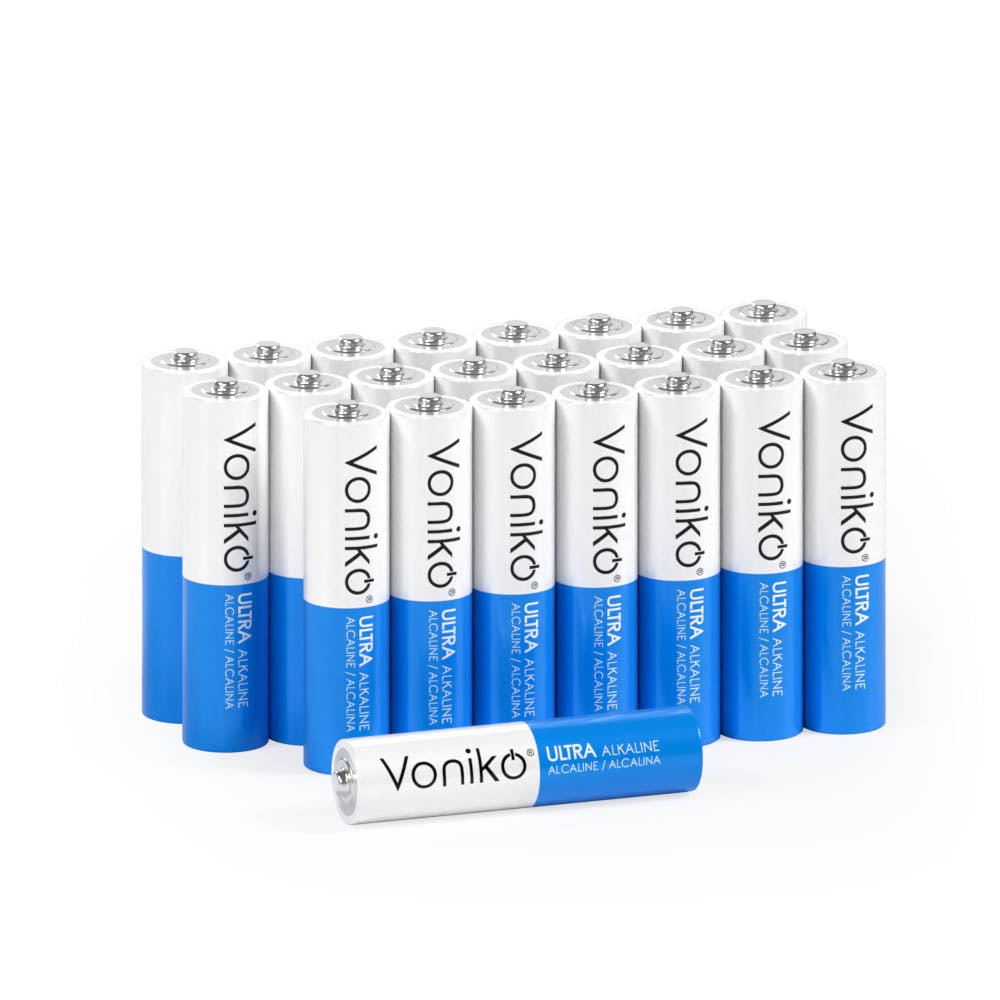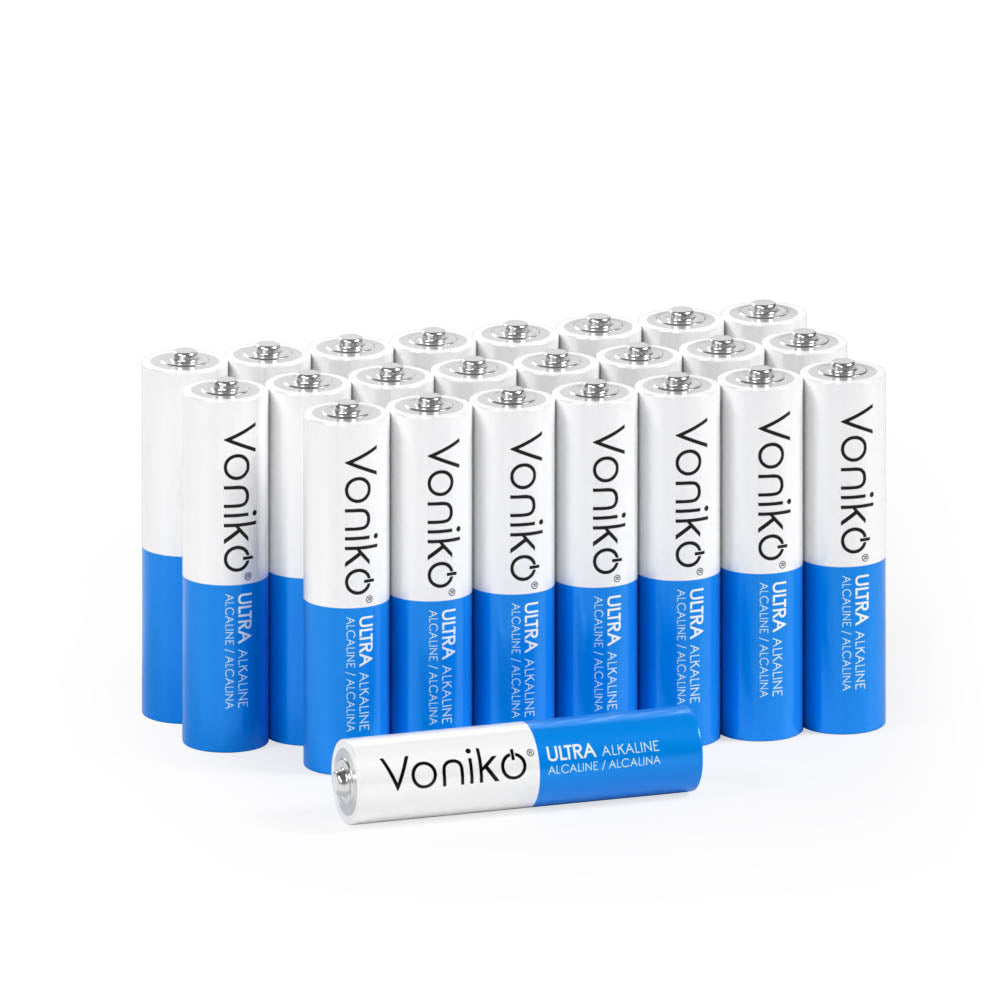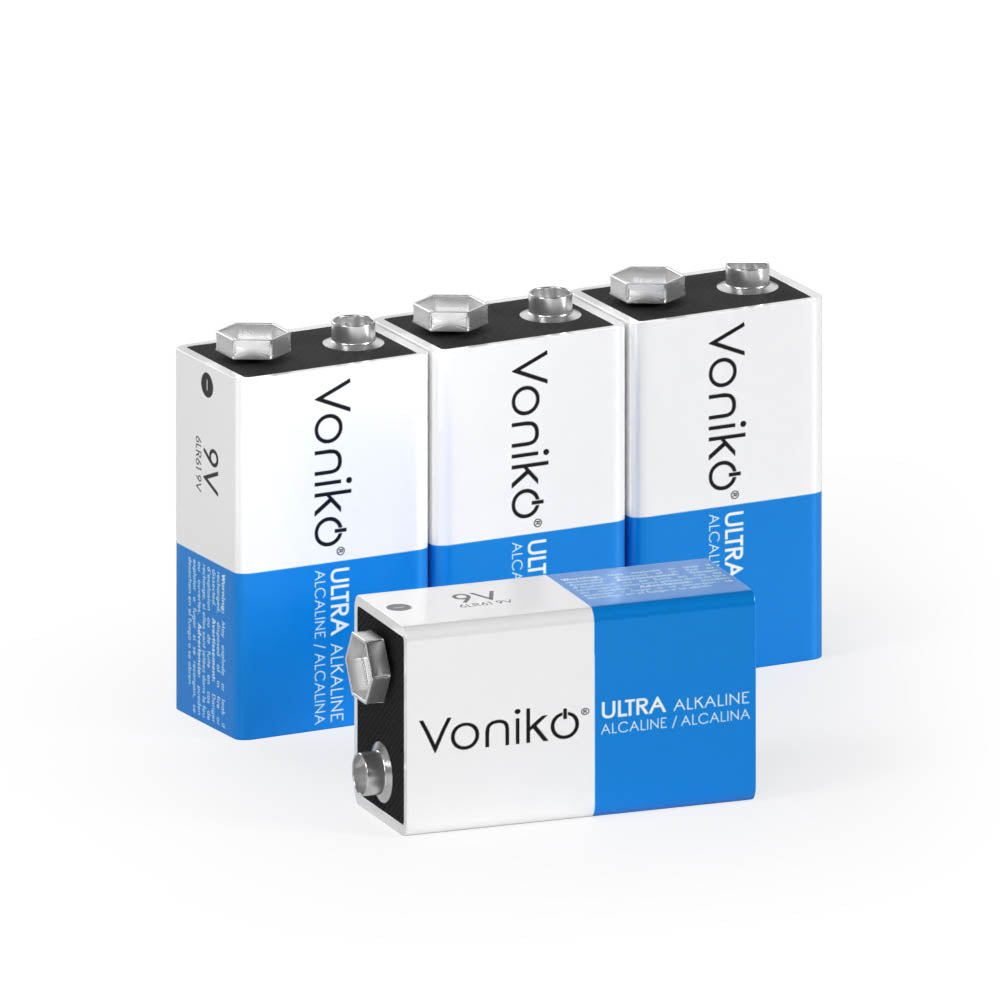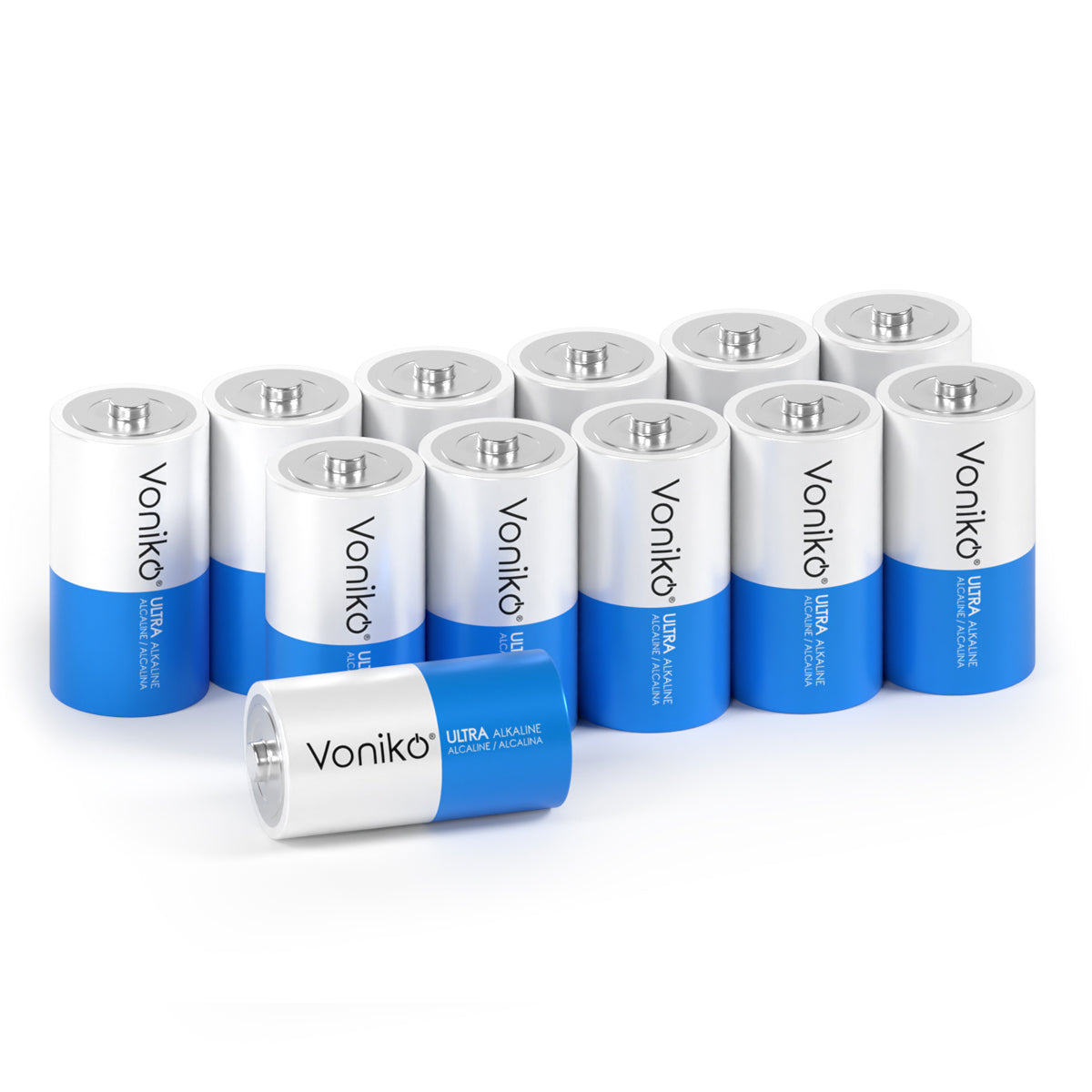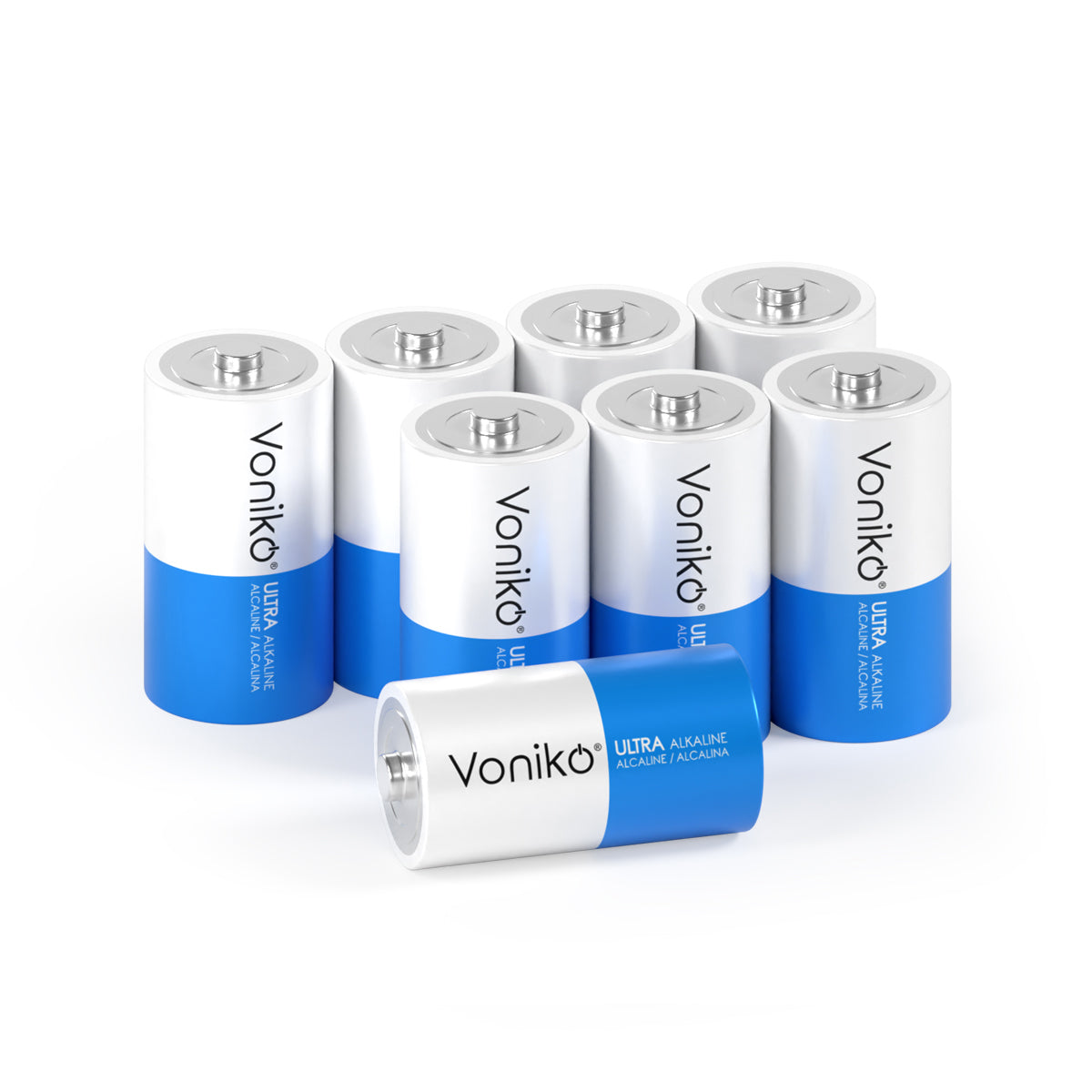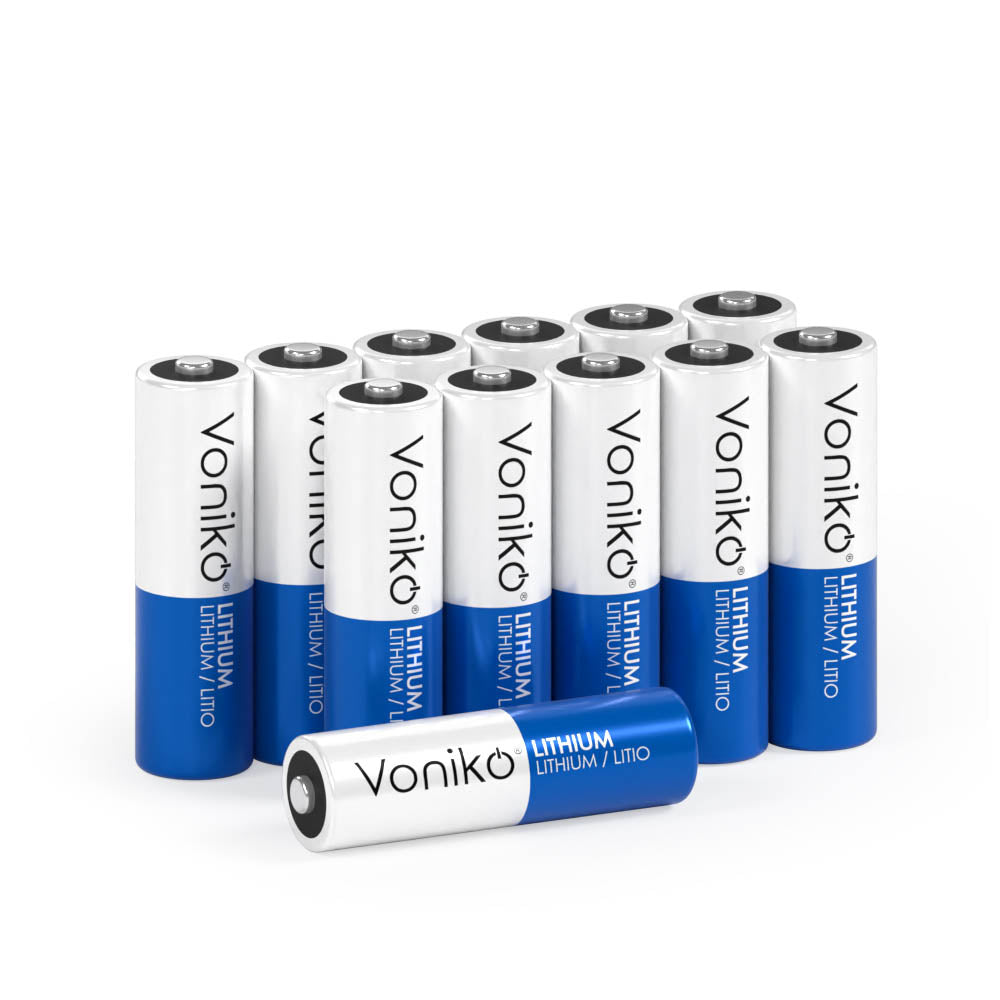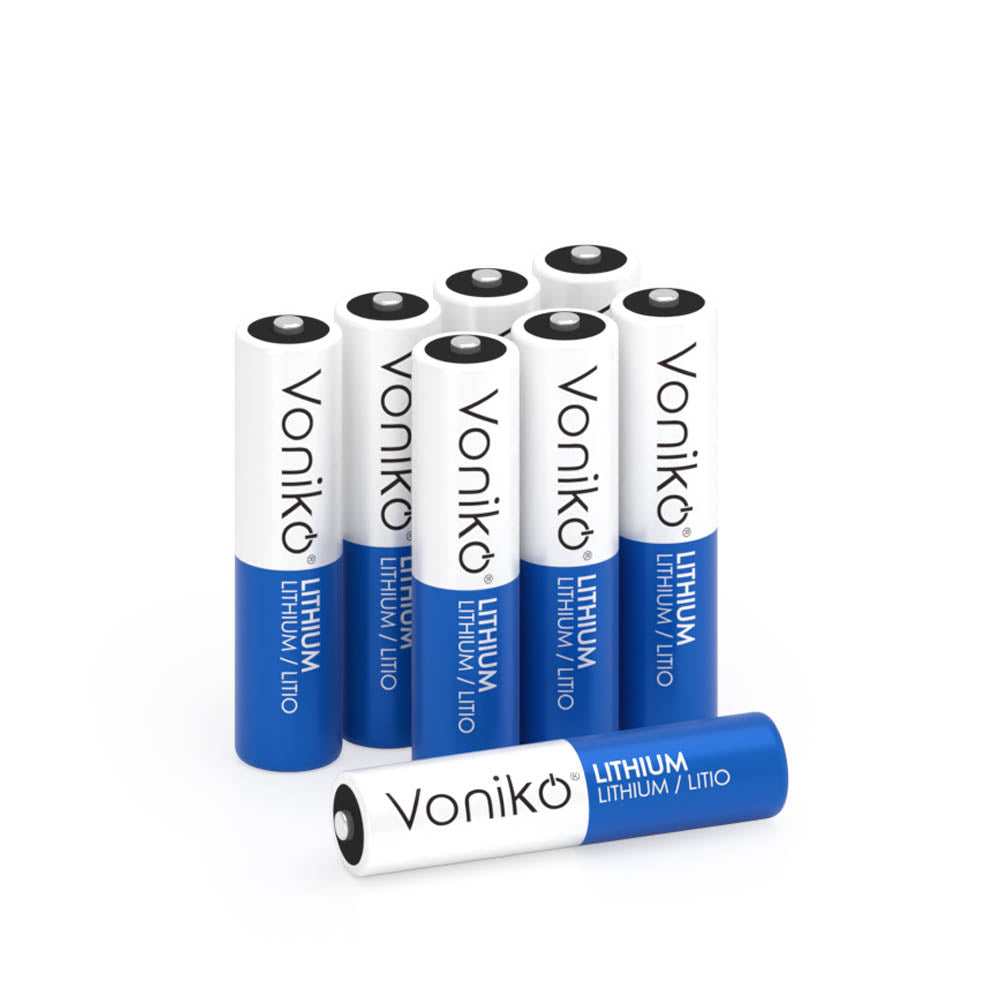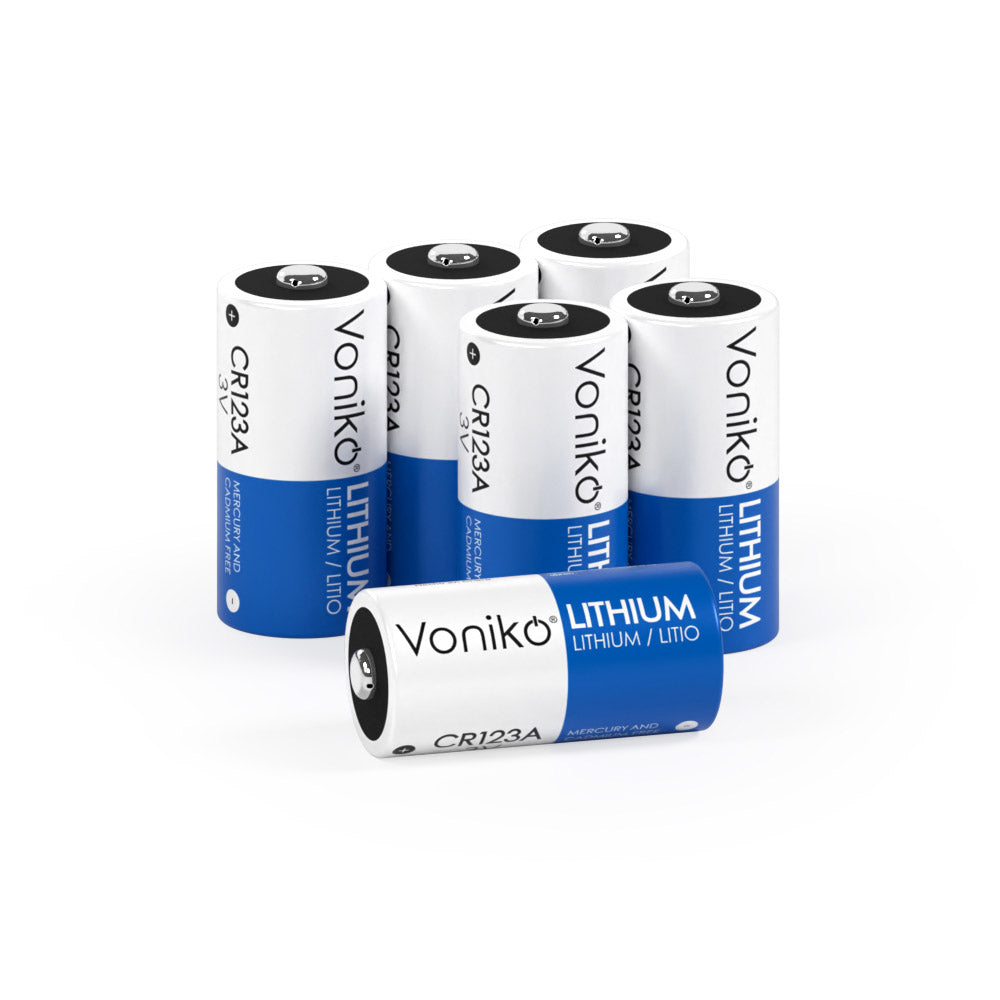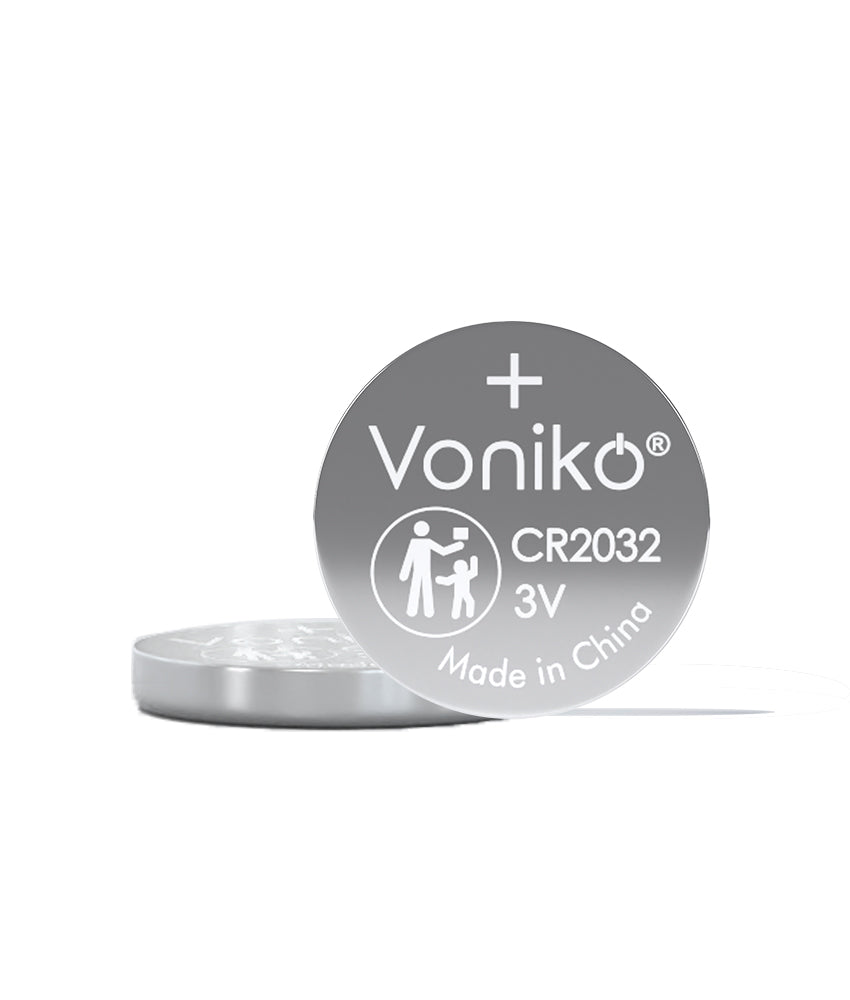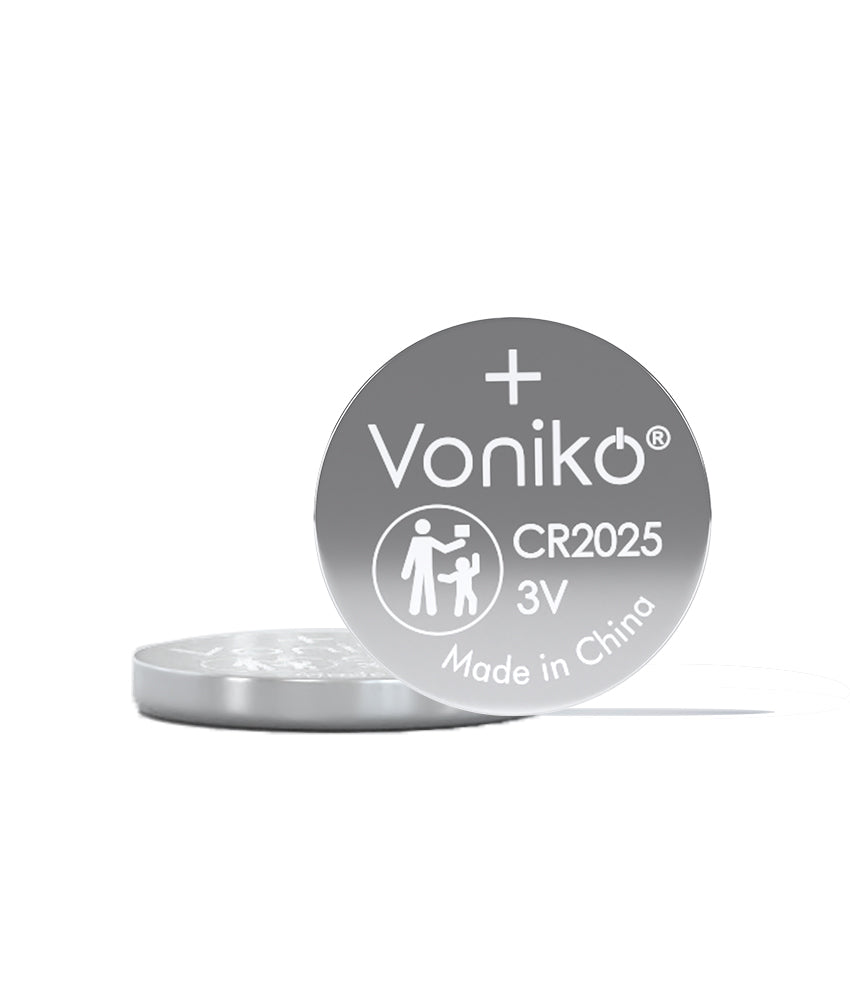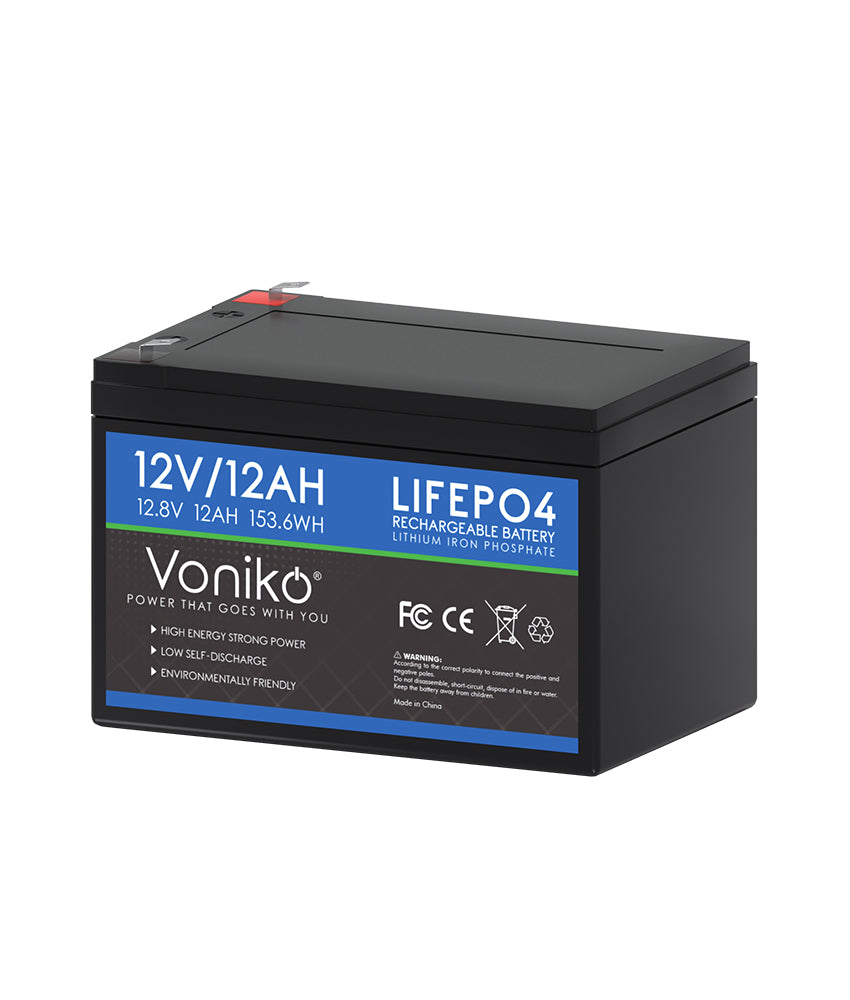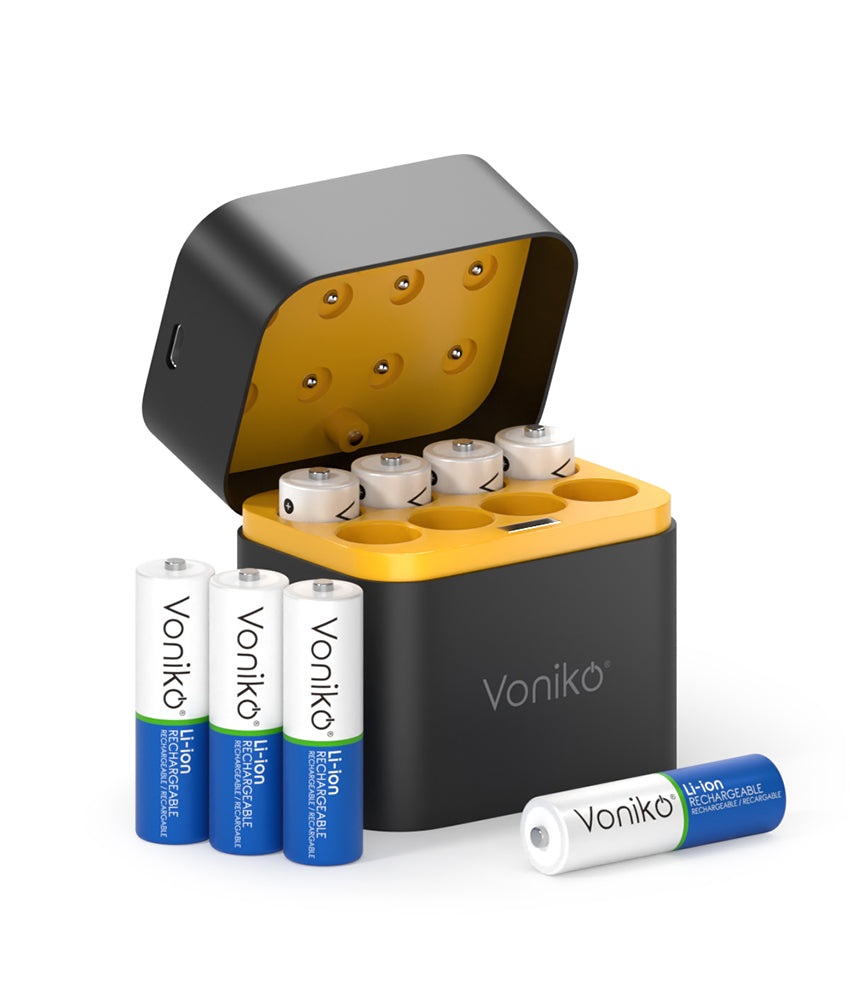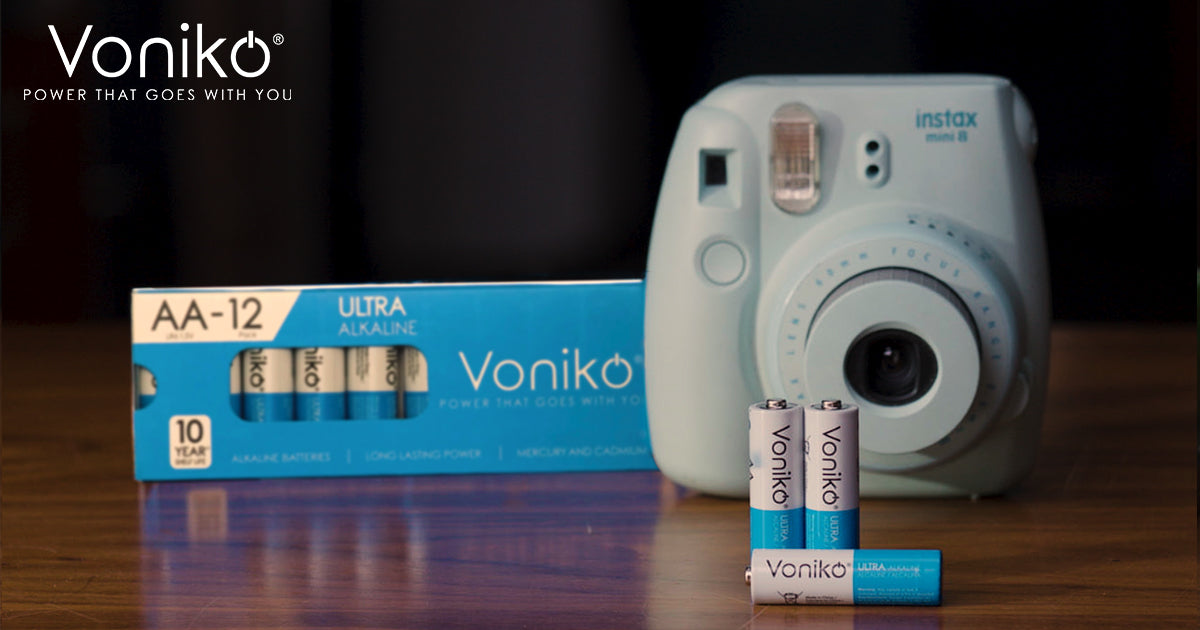You're standing in the battery aisle staring at two packs of AA batteries. One costs 15. Both claim to power your devices, but why is one five times more expensive? The difference between lithium and alkaline AA batteries goes way deeper than price, and picking the wrong one could mean wasted money or devices that fail when you need them most.
Most people grab alkaline batteries because they're cheap and familiar. But here's what's crazy – depending on what you're powering, those "expensive" lithium batteries might actually save you money while giving you way better performance. The trick is knowing when each type makes sense.
At Voniko®, we're a U.S.-based battery brand known for great value household batteries, and we've helped thousands of customers figure out this exact choice. Whether you're looking at our premium alkaline batteries with Power Lock technology or our lithium options, the right choice depends on what you're actually trying to power. Let's break down the real differences so you can stop wasting money on the wrong batteries.
The Basic Chemistry Difference
Here's the deal – alkaline and lithium batteries work completely differently inside, and that affects everything about how they perform. Think of it like comparing a regular car engine to a high-performance sports car engine. They both get you from point A to point B, but the experience is totally different.
Alkaline batteries use zinc and manganese dioxide with an alkaline electrolyte (that's where the name comes from). It's tried-and-true technology that's been around forever. These batteries start strong but gradually get weaker as they drain, kind of like how your phone gets slower when the battery gets low.
What this means for you:
- Alkaline: Starts strong, gets weaker over time, cheap upfront
- Lithium: Consistent power throughout life, more expensive, lasts way longer
- Voltage: Both put out 1.5 volts, so they work in the same devices
- Power delivery: Lithium handles high-drain devices much better
- Lifespan: Lithium lasts 10x longer in power-hungry gadgets
The chemistry difference is why your digital camera might take 50 photos on alkaline batteries but 500+ photos on lithium batteries. It's not magic – it's just better chemistry for demanding applications.
Performance: Where Each Type Shines
The performance difference between these battery types is like night and day, but it depends completely on what you're powering. For some devices, alkaline batteries work just fine. For others, they're basically useless.
Where alkaline batteries work great:
- TV remotes: You press buttons maybe 20 times a day – alkaline batteries will last years
- Wall clocks: Super low power draw, alkaline batteries might last 2-3 years
- Basic flashlights: If you just need occasional light, alkaline does the job
- Smoke detectors: Low power draw most of the time, alkaline batteries work fine
- Kids' simple toys: Basic electronic toys don't need much power
Where lithium batteries crush alkaline:
- Digital cameras: Alkaline gives you maybe 45 shots, lithium gives you 500+
- Gaming controllers: Alkaline dies constantly, lithium lasts months
- Trail cameras: Alkaline might last weeks, lithium lasts months
- High-powered flashlights: Alkaline dims quickly, lithium stays bright
- Emergency gear: Lithium works in any weather, alkaline fails in cold
Here's real test data that shows the difference. In a 1-watt LED flashlight:
- Premium alkaline: About 68 minutes of light
- Lithium: Nearly 200 minutes of light
- That's almost 3x longer runtime
For a digital camera doing photo cycles:
- Alkaline: Around 45 photo cycles before dying
- Lithium: Over 500 photo cycles before replacement
- That's more than 10x the performance
Cost Analysis: When Expensive Becomes Cheap
This is where things get interesting. Yes, lithium batteries cost way more upfront – sometimes 5x the price of alkaline. But in the right applications, they're actually cheaper per hour of use.
Let's say you've got a wireless gaming controller. A 4-pack of our alkaline batteries with Power Lock technology might cost $8.20 for a 4-pack but give you 200+ hours of gaming.
The math:
- Alkaline: 0.40 per hour
- Lithium: 0.10 per hour
- Lithium is actually 4x cheaper per hour of use
But flip this around for a TV remote. That same 20 lithium pack lasts just as long. In low-drain devices, alkaline is usually the smarter choice.
When lithium saves money:
- Devices that eat batteries monthly or more often
- High-drain electronics like cameras and controllers
- Professional equipment where downtime costs money
- Emergency gear where reliability is worth the premium
- Cold weather applications where alkaline fails
When alkaline makes more sense:
- Low-drain devices like remotes and clocks
- Devices used occasionally
- Budget-conscious situations where good enough is fine
- Backup batteries for emergency kits
- Kids' toys that get lost or broken anyway
Temperature Performance: The Big Difference
Here's where lithium batteries really show off. Temperature kills alkaline batteries, but lithium batteries just keep going. This isn't a small difference – it's often the difference between a device that works and one that's completely dead.
Alkaline battery performance by temperature:
- Above 70°F: Works normally
- 50-70°F: Slight capacity reduction
- 32-50°F: Noticeable power loss, maybe 20-30% less capacity
- Below 32°F: Major problems, can lose 50%+ capacity
- Below 0°F: Might not work at all
Lithium battery performance:
- -40°F to 140°F: Consistent performance across this entire range
- No significant capacity loss in normal weather
- Actually works better in cold than alkaline works in room temperature
This temperature thing is huge for:
- Trail cameras: They're outside 24/7 in all weather
- Car emergency kits: Sitting in hot summers and freezing winters
- Outdoor sensors: Weather stations, security cameras, etc.
- Garage door openers: Ever notice your remote stops working in winter?
- Camping gear: When you're depending on your flashlight in the mountains
I've seen people switch to lithium batteries just because their garage door opener remote stopped working every winter. That's a $15 battery fix that saves you from getting locked out of your garage when it's 10°F outside.
Shelf Life: How Long They Last Sitting Around
This is another huge difference that most people don't think about. How long do batteries last just sitting on your shelf or in a device you don't use much?
Alkaline batteries:
- 10 year shelf life when stored properly
- Gradually lose charge even when not in use
- Can leak if stored too long, especially in devices
- Still pretty good for most storage situations
Lithium batteries:
- 10 year shelf life and actually mean it
- Almost no self-discharge – they're basically the same after years of storage
- Don't leak like alkaline batteries can
- Perfect for emergency gear that sits unused for years
The shelf life thing makes lithium batteries great for:
- Emergency preparedness: Set it and forget it for years
- Seasonal equipment: Christmas lights, camping gear, pool thermometers
- Backup devices: Emergency radios, flashlights you hope to never need
- Bulk buying: Stock up during sales without worrying about them going bad
- Rarely used devices: Specialty tools, measurement equipment
Weight and Size: Lighter but Same Shape
Both battery types are the exact same size and shape – they're both AA batteries that fit in the same devices. But lithium batteries are about 35% lighter than alkaline batteries.
Why weight matters:
- Portable devices: Your camera or GPS won't feel as heavy
- Trail cameras: Less stress on mounting systems
- Backpacking gear: Every ounce counts when you're hiking
- Kids' toys: Lighter toys are easier for small hands to handle
- Emergency kits: Easier to carry around when you actually need them
The weight difference isn't huge for one battery, but when you're talking about devices that use 6-8 batteries, or you're carrying multiple devices, it adds up fast.
Environmental Impact: The Complicated Truth
Both battery types have environmental impacts, but they're different kinds of impacts. This gets complicated fast, but here's the basic breakdown.
Alkaline batteries:
- Less environmental impact per battery to manufacture
- But you use way more of them in high-drain devices
- Contain fewer rare materials
- Create more waste volume because you go through more batteries
Lithium batteries:
- Higher environmental impact per battery to manufacture
- But replace many alkaline batteries over their lifetime
- Contain lithium, which requires mining
- Create less total waste in high-use applications
The math works out like this: if one lithium battery replaces 10 alkaline batteries in your camera, the environmental impact is probably lower overall with lithium. But if you're putting them in a wall clock that would run for years on alkaline, the environmental impact is probably higher with lithium.
Device Compatibility: What Works Where
Both battery types work in any device designed for AA batteries, but some devices work better with one type or the other.
Devices that prefer alkaline:
- Simple electronics with low power draw
- Older devices designed when alkaline was the only option
- Basic toys and gadgets that don't need consistent power
- Backup applications where cost matters more than performance
Devices that prefer lithium:
- Digital cameras and high-tech photography gear
- Gaming controllers and wireless devices
- High-powered LED flashlights
- Trail cameras and security equipment
- Professional tools where performance matters
- Emergency gear that needs to work in any conditions
Devices that are picky about voltage:
Some sensitive electronics might notice the difference in how these batteries deliver power, but 99% of devices work fine with either type.
Making the Right Choice for Your Situation
Here's how to decide what to buy:
Go with alkaline when:
- The device uses very little power (remotes, clocks, basic toys)
- You're on a tight budget and need batteries now
- The device gets used occasionally
- You're buying backup batteries for emergency kits
- It's going in something that might get lost or broken
Go with lithium when:
- The device eats batteries regularly (monthly or more often)
- You need reliability in extreme temperatures
- It's emergency gear that has to work when you need it
- The device is expensive and you want to protect it from battery leaks
- Weight matters for portable applications
- You want to "set it and forget it" for months at a time
Real-world examples:
- TV remote: Alkaline – you'll change it once every 2+ years anyway
- Gaming controller: Lithium – you'll save money and hassle in the long run
- Wall clock: Alkaline – minimal power draw, alkaline lasts forever
- Trail camera: Lithium – has to work in all weather for months
- Emergency flashlight: Lithium – you need it to work when disaster strikes
- Kids' basic toy: Alkaline – they'll probably lose interest before the batteries die
Our Recommendations by Use Case
At Voniko®, we make both types because different situations call for different solutions. Here's our honest take on when to use what:
For everyday household stuff: Our alkaline batteries with Power Lock technology give you 40% longer lasting power compared to competitor brands. They're perfect for remotes, clocks, basic toys, and anything that doesn't drain batteries fast.
For high-performance applications: Our lithium AA batteries deliver that 10x longer lasting performance in demanding devices. They're worth every penny for cameras, gaming gear, trail cameras, and emergency equipment.
For rechargeable needs: Consider our AA lithium-ion batteries that provide ≈ 1900 energizer ultimate capacity for devices you use constantly.
The bottom line? Don't use one type for everything. Mix and match based on what you're actually powering. Your wallet and your devices will thank you.
Power that goes with you – that's what we're all about at Voniko®. Whether that means reliable alkaline batteries for your everyday needs or premium lithium performance for your most important gear, the right battery choice makes all the difference in how your devices perform when you need them most.

